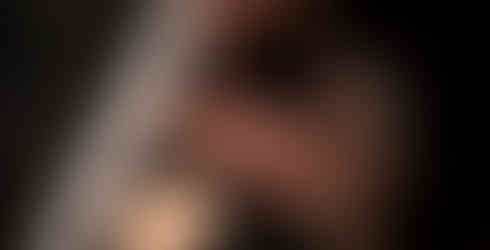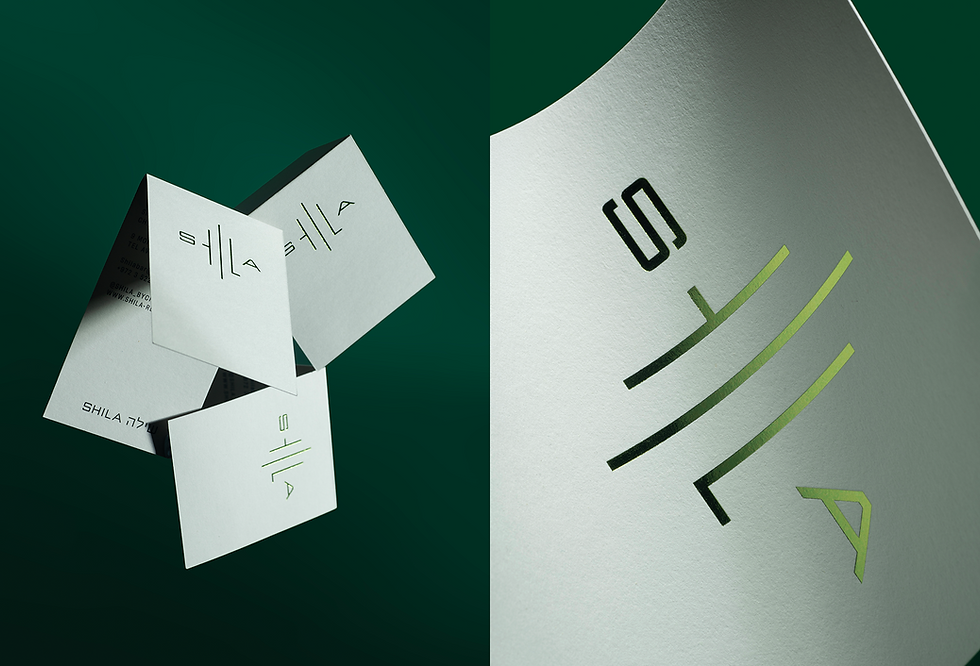- Yaara Shatner
- Feb 12, 2020
- 5 min read
Updated: Nov 19, 2023
Wearing a casual white jumpsuit with an intricate black pattern, Alexandra Zsigmond is standing at the back of a crowded hall, getting ready to go on stage. As she makes her way to the stage, the pattern comes into focus, revealing hand-drawn, curving lines with a cryptic, codified look. The ability to draw attention to seemingly small details is a skill Zsigmond masters, the audience at OFFF Festival soon learns. Her talk begins with an overview of her past role as Art Director for the New York Times, where she commissioned several thousand editorial illustrations from freelance artists worldwide. She continues by discussing semiotics and the use of the eye as a symbol in illustration and fine art, and also briefly outlines her art practice. The overarching focus of the talk is the importance of concept and symbolism in art, giving new meaning to what a visual thinker actually is.
Visual thinking played an important role throughout Zsigmond’s tenure at the New York Times Opinion section, which included challenges like last-minute layout changes and impossible 5-hour deadlines. In practice, she was highly engaged in the role, continuously attentive to the artists’ creative processes while searching for the logic and methods needed to do her work efficiently. She developed an impressive catalog of artist collaborators and made the art of diplomatic email correspondence her forte. Throughout her tenure, Zsigmond constantly utilized her knowledge of semiotics to understand and refine the illustrations she commissioned. She viewed editorial art as an intricate lexicon with its own vocabulary, grammar, and rules. This interest in visual language has followed her far beyond her position at the Times.

Alexandra Zsigmond, OFFF Tel Aviv, 2019.
Finding Clarity in Surrealism
Zsigmond began drawing as a child and claims that one of her first loves was creating images. In college this passion evolved into an interest in analyzing art rather than making it, which led her into art history, writing, curating, and art directing. After 7 years of working at the Times from 2010 to 2017, she felt a need to go back to art-making. “I realized I was either going to do my job indefinitely, or I had to make some sort of choice to figure out how to bring other creative elements into my life in a more balanced way.”
Nevertheless, her first professional steps into art were as an art theorist rather than as an artist or designer. She graduated from Stanford with a degree in philosophy and art history; her honors thesis examined visual metaphor in the work of Surrealist artist René Magritte. The thesis involved “coming to an understanding of what a verbal metaphor is, and what its visual equivalents might be” through the lens of Magritte’s paintings, she explains. “He created very noticeable juxtapositions of images, in which he combined unrelated objects in surprising ways, thereby creating unique metaphors. As a result, he's become a grandfather of conceptual illustration. His images have become iconic and hackneyed, yet so many illustrators still refer to him in their work.” Zsigmond first became interested in Magritte while visiting museums as a kid. She found herself gravitating towards Surrealist artwork, which she later understood as an interest in the conceptual image. “There are certain types of images whose goal is to communicate complex, abstract ideas in a clear, yet captivating way. Those are the kinds of images I've always been interested in.”

Alexandra Zsigmond, Glyph System VII, Ink on Paper, 6.25 x 7.5 inches, 2018

In Practice event, Installation View, 2020. Photographer: Simona Bua
Communicating Creativity
Zsigmond’s reading of Magritte’s work reflects how she thinks about visual art in general: as an alphabet or lexicon with endless possible combinations that bear new meaning. This view influenced how she communicated with illustrators at the Times. She saw her role as a facilitator of “a creative and critical environment to discuss, interpret, and analyze visuals.” Art direction can sometimes feel solitary, but as a visual thinker, Zsigmond was interested in collaboration and discussion, bringing in other colleagues to weigh in on her decision-making. This helped her feel more confident when delivering feedback to artists. “When something isn't working, you have to communicate why it’s not working. An art director is an active collaborator, someone that can be part of the brainstorming process. That's why it's so important for art directors to have a visual knowledge of symbols and semiotics so that they can be an active brainstorming tool if an illustrator is stuck.”
This brainstorming process always varied given the assignment at hand, and some conversations took longer than others. “My longest email chain with an illustrator was maybe 150 emails long. Some illustrations take only five emails - those are the ones where the illustrator nails it immediately or the topic is more straightforward. But then other jobs just demand a longer conversation.” This connects to a wider discussion about how much to art direct an illustrator, and a personal dialogue she has with herself about how much to strive for perfection. “Oftentimes I've used the director Stanley Kubrick as an example, who was the ultimate perfectionist and drove his collaborators completely mad. But at the same time, the images in his films are perfection.” Taking the time she did to give detailed feedback on each illustration, Zsigmond rose to become one of the most thought-provoking art directors. “[I wanted to show illustrators] that I care about the image and that I wanted to make sure they’re creating their best work.”

A series of illustrations "My Monster, My Self" commissioned for the NYTimes Anxiety blog, Opinion Section.

In Practice event, photographer: Simona Bua
Communicating with Yourself
One aspect Zsigmond sheds light on is the difficulty inherent in the communication process. “Thinking and writing about art are difficult because it means giving words to things that typically have no words,” she says. To aid in this process, she suggests thinking critically about “how you yourself are interpreting the image” and taking it from there. Zsigmond has built a short workshop on communicating with illustrators, which she’s given at the Wix Playground Academy and design schools throughout Europe. Students are asked to adopt the role of art director and select the strongest image from a series of sketches, then write a mock email to the illustrator explaining their decision-making process and providing feedback. “When I initially gave students this assignment, they thought it was going to be an intuitive, extremely easy process. And as they tried they realized how difficult it really is.”
Zsigmond’s take on communication reveals her interest in analyzing things that others tend to overlook. This philosophy also extends to her art. Like many artists working today, it is her approach—a balance between razor-sharp analytics and open-ended curiosity—that defines her practice, rather than the media she uses. The “critical art director’s voice” that she developed at the Times enabled Zsigmond to find confidence in her vision.
In Practice, Tamata workshop view. Photographer: Simona Bua

Alexandra Zsigmond, original Tamata artwork
This past year, Zsigmond took part in a series of art residencies to focus on her work. Her next project is to refine a hefty collection of drawings, diagrams, and notes that she has created over the past ten years that explore visual metaphors for psychology and thinking. But letting go of the critical part of her mind hasn’t been easy. While she thinks it serves her well by allowing her “to hone in on how to improve things,” it also means that she “overly criticizes” her ideas. Searching for that balance has been a good lesson, and she’s learned that “even if my ideas are imperfect, just trying to paint, draw or write them and see what they become is inherently valuable.”
“I'm still a work in progress,” she says, “and I definitely feel that it’s a vulnerable position to be in. I feel humbled by all of the artists that I've worked with who are so talented and who have spent so much time developing their craft, I'm so new to it.” Moving between practices, she gives new meaning to her visual thinker title, making us wait, patiently, to see what she thinks of next.

In Practice, Alexandra Zsigmond's hanging hand-drawn pieces, Installation View.
Photographer: Simona Bua
Check out Alexandra Zsigmond’s website











